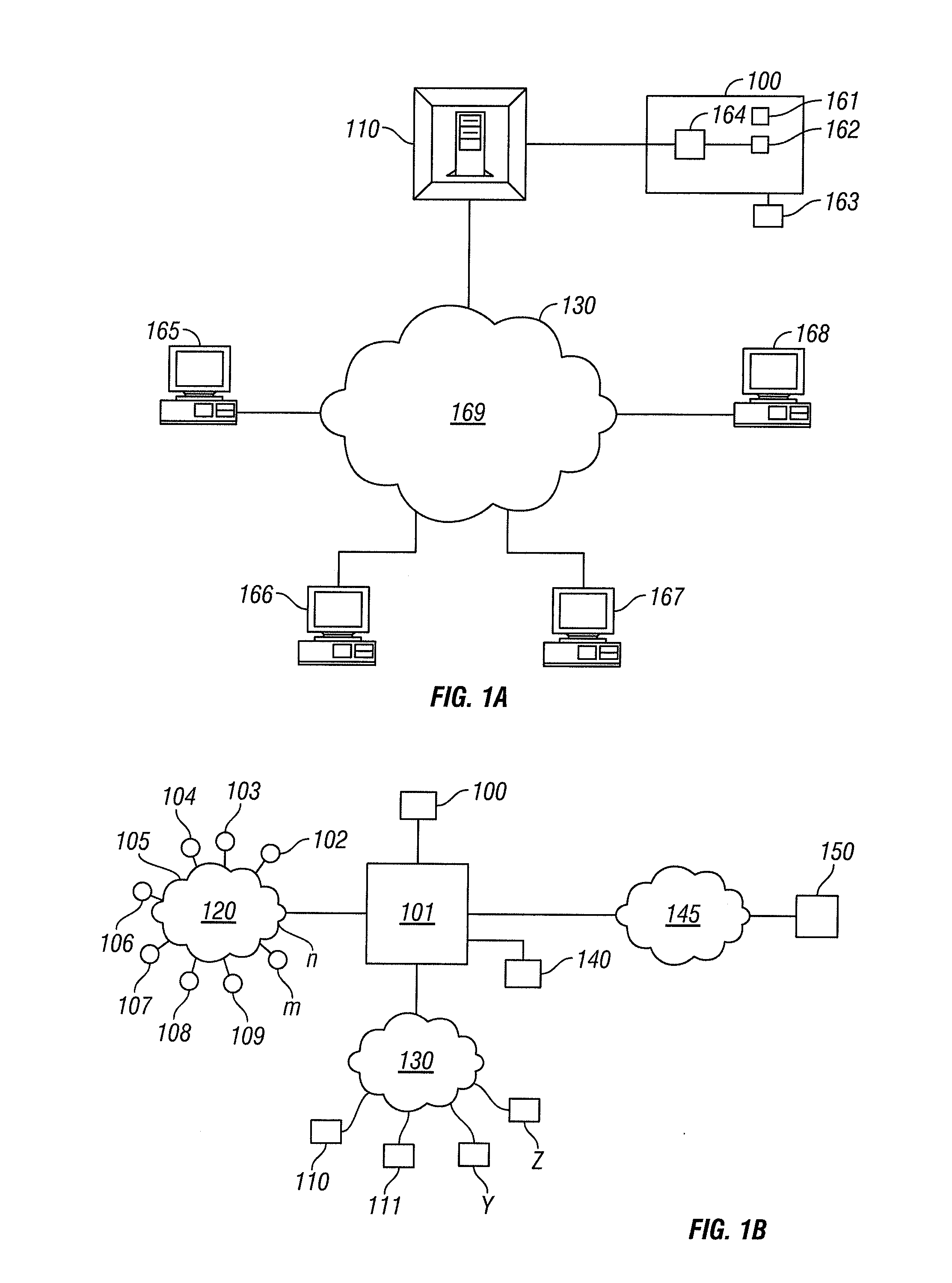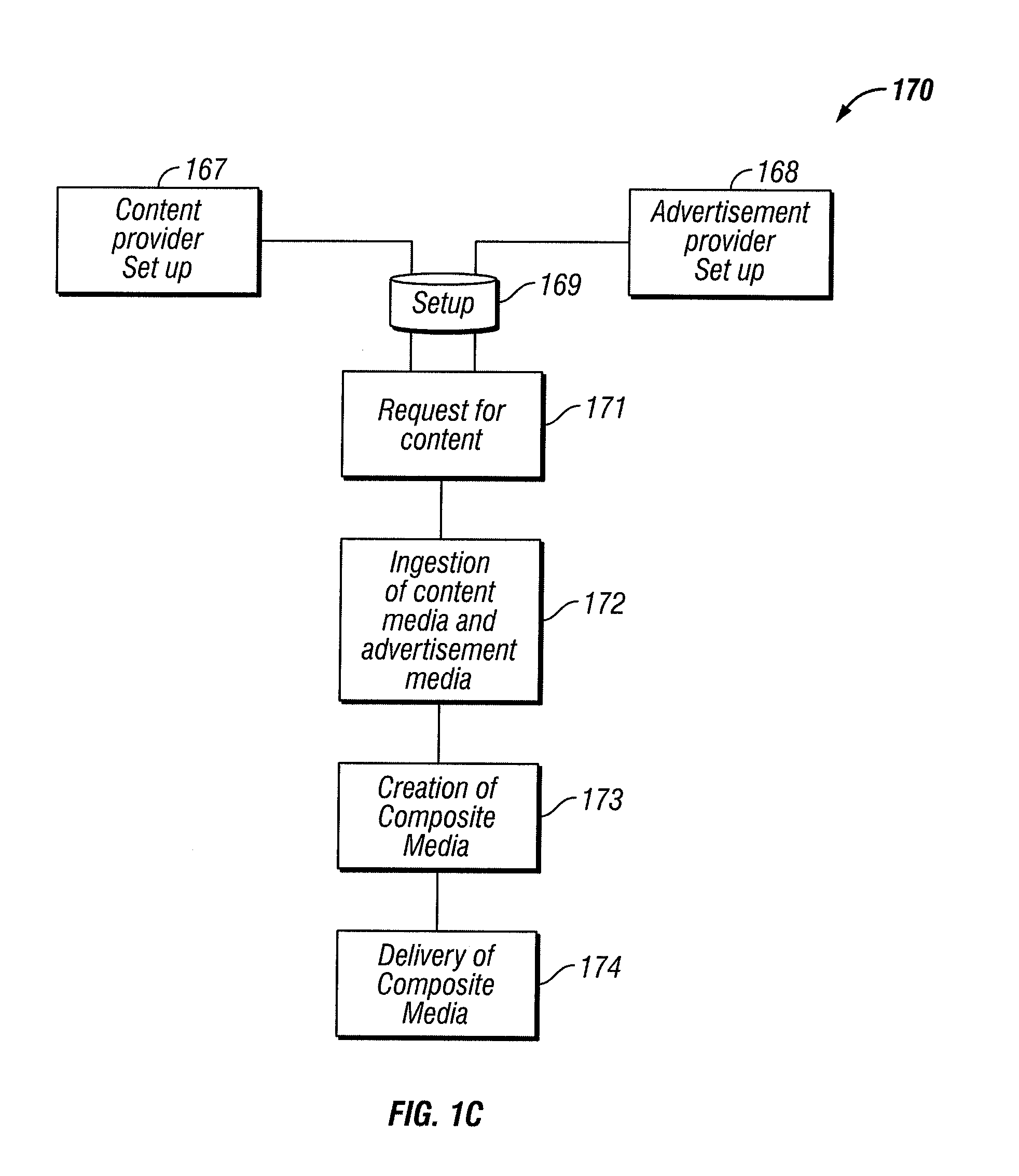Media Processing Engine and Ad-Per-View
a technology of media processing engine and ad-per-view, which is applied in the field of digital media processing and delivery, can solve the problems of not all web browsers working correctly with these technologies, the system would be very slow, and the labor-intensive construction of web sites today
- Summary
- Abstract
- Description
- Claims
- Application Information
AI Technical Summary
Benefits of technology
Problems solved by technology
Method used
Image
Examples
Embodiment Construction
System Overview
[0074]A server-based processing engine ingests digital media and advertisement content, assembles composite content and distributes the composite content in any desired format to all types of devices.
[0075]FIG. 1A is a schematic diagram showing a digital media processing system 100 placed within a network infrastructure according to the presently preferred embodiment of the invention. The system 100 comprises memory 161 and a processor 162 configured to store and process computer readable instructions for carrying out the automatic media delivery system according to the invention. The system optionally includes an interface 163 comprising a Graphical User Interface (GUI) for allowing a human user to interface the automatic media delivery system. The processor 162 is also coupled with a network interface 164 such that the system 100 may communicate with one or more web servers 110. In the presently preferred embodiment, the system 100 is coupled with a web server 110, ...
PUM
 Login to View More
Login to View More Abstract
Description
Claims
Application Information
 Login to View More
Login to View More - R&D
- Intellectual Property
- Life Sciences
- Materials
- Tech Scout
- Unparalleled Data Quality
- Higher Quality Content
- 60% Fewer Hallucinations
Browse by: Latest US Patents, China's latest patents, Technical Efficacy Thesaurus, Application Domain, Technology Topic, Popular Technical Reports.
© 2025 PatSnap. All rights reserved.Legal|Privacy policy|Modern Slavery Act Transparency Statement|Sitemap|About US| Contact US: help@patsnap.com



